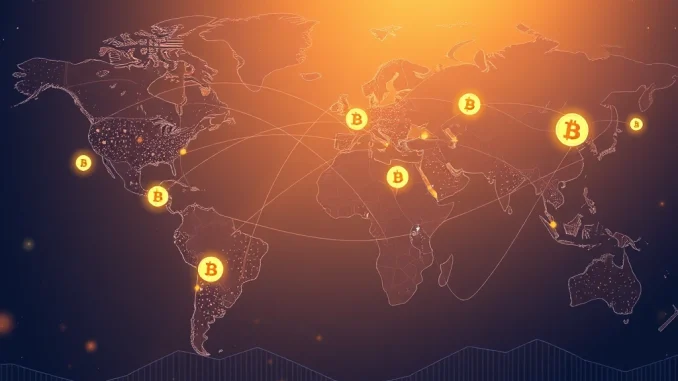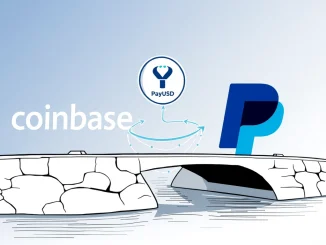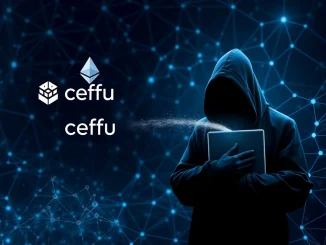
Alchemy Pay, a known player in the fiat-to-crypto payment space, is making a significant move to tackle the complexities of global money transfer. The company recently published details about its ambitious plan: the Alchemy Chain. This isn’t just an upgrade; it’s a completely new Layer-1 Blockchain designed with a specific, crucial goal in mind: facilitating seamless and affordable Stablecoin Payments for Cross-Border Payments.
Understanding the Vision: Alchemy Pay and Alchemy Chain
The core idea behind Alchemy Pay‘s new venture is to leverage the stability of stablecoins to improve international transactions. Traditional methods for sending money across borders can be slow, expensive, and riddled with hidden fees. Existing blockchain solutions, while faster, often suffer from volatile transaction costs (gas fees) and complexity for mainstream users. This is where Alchemy Chain aims to carve out its niche.
As a dedicated Layer-1 Blockchain, Alchemy Chain is being built from the ground up to prioritize the specific needs of payment processing. This means designing the network’s architecture to be efficient, scalable, and cost-predictable, unlike general-purpose blockchains that might struggle under high transaction volumes or unpredictable network congestion.
Key Features Driving Stablecoin Payments
The roadmap highlights several features intended to make Stablecoin Payments on Alchemy Chain practical and user-friendly:
- Fixed Gas Fees: One of the biggest hurdles for using many blockchains for regular payments is the fluctuating cost of transactions. Alchemy Chain plans to implement fixed gas fees, providing users and businesses with cost certainty for every transaction. This predictability is vital for financial planning and widespread adoption.
- Integrated Currency Conversion: To truly facilitate Cross-Border Payments, seamless conversion between different currencies (both fiat and crypto) is essential. The roadmap indicates that Alchemy Chain will have integrated features to handle currency conversion directly within the network or via closely linked services, simplifying the process for users.
- Focus on Stablecoins: While other assets might eventually be supported, the initial and primary focus is on stablecoins. This is a strategic choice, as stablecoins peg their value to more stable assets like fiat currencies (e.g., USD, EUR), avoiding the price volatility associated with cryptocurrencies like Bitcoin or Ethereum. This stability makes them ideal for payments and remittances.
The Roadmap Ahead: When Can We Expect Alchemy Chain?
According to the published roadmap, the full mainnet launch of Alchemy Chain is anticipated in the second quarter of 2026. While this might seem like a future date, building a robust, secure, and scalable Layer-1 Blockchain capable of handling global Cross-Border Payments is a complex undertaking that requires extensive development, testing, and auditing.
The period leading up to 2026 will likely involve several key phases:
- Ongoing protocol development and refinement.
- Launching testnets for developers and early users to experiment and provide feedback.
- Security audits to ensure the network is resilient against potential threats.
- Building out the ecosystem, including partnerships with businesses, wallets, and other service providers who will utilize Alchemy Chain for Stablecoin Payments.
The detailed roadmap provides a phased approach, indicating the milestones Alchemy Pay aims to achieve as it progresses towards the mainnet launch.
Why are Cross-Border Payments a Key Focus?
The global market for Cross-Border Payments is massive, involving everything from individual remittances to large corporate transactions. However, the existing system is often inefficient:
- High Costs: Banks and traditional money transfer services often charge significant fees, especially for smaller amounts.
- Slow Speed: Transactions can take days to clear, particularly across different time zones and banking systems.
- Lack of Transparency: Fees and exchange rates can be opaque.
- Limited Accessibility: Access to these services can be difficult in some regions.
Blockchain technology, particularly when optimized for stablecoins, offers a compelling alternative. By reducing intermediaries and operating 24/7, a network like Alchemy Chain has the potential to make these payments faster, cheaper, and more accessible for everyone.
Potential Impact and Challenges
If successful, Alchemy Chain could significantly impact how businesses and individuals send and receive money internationally. For users, it could mean lower fees when sending money home or paying for goods and services abroad. For businesses, it could streamline supply chain payments and expand market reach.
However, the path forward isn’t without challenges. Building a widely adopted Layer-1 Blockchain requires overcoming significant hurdles, including:
- Regulatory Compliance: Navigating diverse international regulations around stablecoins and money transmission.
- Network Security: Ensuring the network is secure and reliable from day one.
- Adoption: Convincing businesses and users to switch from established systems.
- Competition: The space for blockchain-based payments is becoming increasingly crowded.
Alchemy Pay‘s existing relationships in the payment processing world could provide a head start in driving adoption, but the success of Alchemy Chain will ultimately depend on its technical performance, ease of use, and ability to build a strong ecosystem.
Conclusion: A Bold Step for Alchemy Pay
The publication of the Alchemy Chain roadmap represents a bold step for Alchemy Pay. By focusing on a dedicated Layer-1 Blockchain for Stablecoin Payments and Cross-Border Payments, they are aiming directly at a major pain point in the global financial system. While the 2026 mainnet launch is still some time away, the detailed roadmap provides a clear vision of how Alchemy Pay plans to contribute to the future of digital payments, emphasizing predictability through fixed fees and user-friendliness with integrated conversion. The journey ahead will be watched closely by those hoping for more efficient and affordable ways to move value across the globe.



